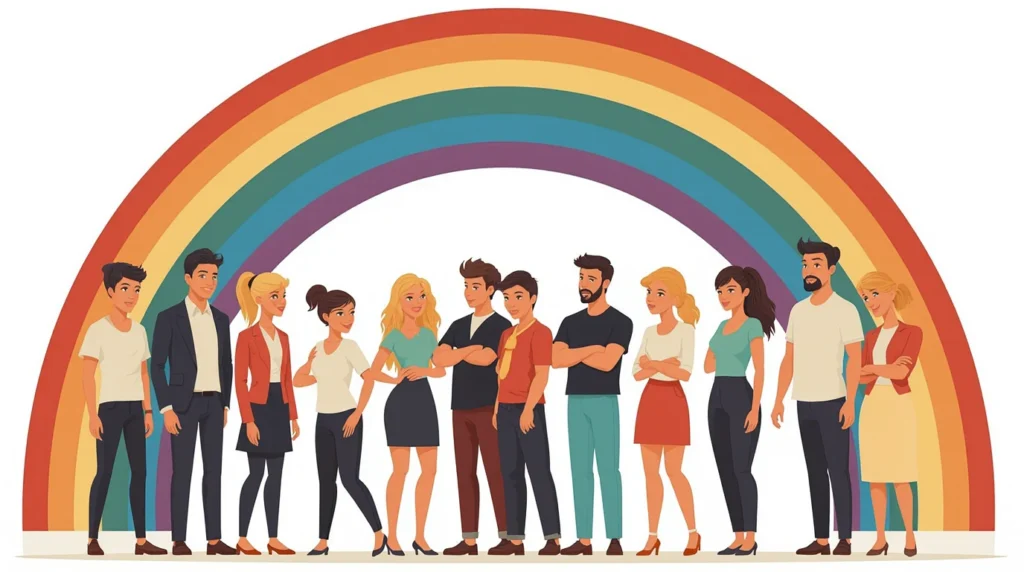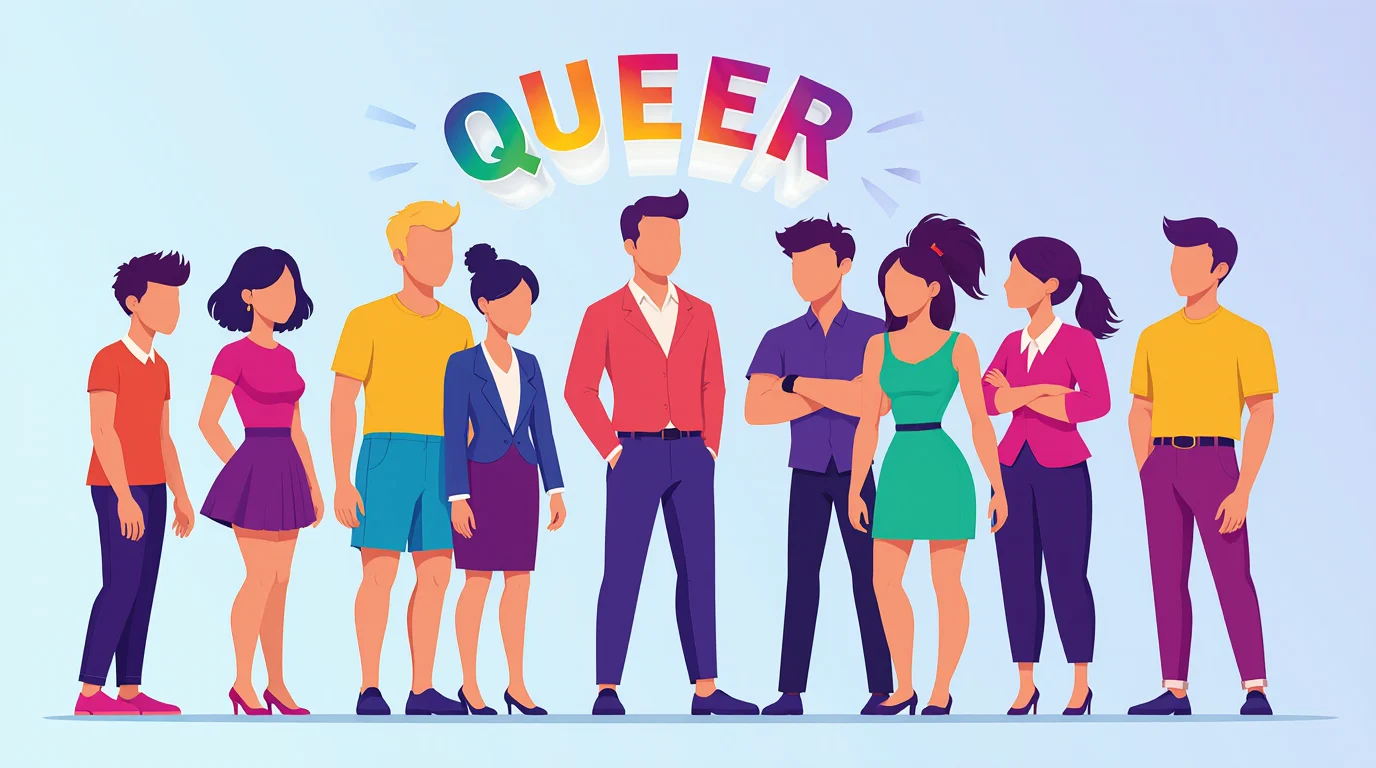The word queer has transformed dramatically over time. Once used as a slur, today it has been reclaimed by many in the LGBTQ+ community as a proud identity. For millions of Americans, queer represents freedom, inclusivity, and the right to exist authentically without labels that feel limiting.
But what exactly does it mean to be queer? And why does the term resonate so strongly with younger generations in the U.S.? Let’s dive deep into the history, identity, and culture of queer life today.
Table of Contents
The Evolution of the Word “Queer”
From Insult to Empowerment
Historically, the term queer was used negatively to attack people perceived as different or non-heterosexual. However, during the late 20th century, LGBTQ+ activists began reclaiming the word.
By the 1990s, movements like Queer Nation turned the word into a symbol of resistance, saying: “We’re here, we’re queer, get used to it.” This was more than a slogan — it was a turning point in LGBTQ+ history in America.
Queer as an Umbrella Term
Today, queer is often used as an umbrella term that includes lesbian, gay, bisexual, transgender, nonbinary, and other identities outside the heterosexual norm. While not everyone in the LGBTQ+ community identifies with the term, many use it to describe a fluid and inclusive sense of self.
Queer Identity in the U.S.

Why Queer Resonates with Young People
Surveys show that younger generations in America, especially Gen Z, are more likely to embrace the label queer. Why? Because it allows flexibility. Unlike rigid labels, queer can represent a wide spectrum of identities and experiences.
For example, someone might feel connected to both bisexual and nonbinary experiences — queer becomes the simplest, most authentic way to describe themselves.
The Role of Queer Visibility
Queer visibility in American culture has grown massively through:
- Queer representation in TV and film (Pose, Heartstopper, Orange Is the New Black)
- Queer music icons like Lil Nas X, Janelle Monáe, and Hayley Kiyoko
- Social media platforms like TikTok and Instagram, where queer voices and stories trend daily
The Importance of Queer Community
Safe Spaces for Queer People
In the U.S., queer communities thrive in urban hubs like New York City, Los Angeles, and San Francisco. Pride events, LGBTQ+ centers, and online forums give queer individuals a sense of belonging.
For many, finding queer community is not just about socializing — it’s about survival. Support systems help queer people face challenges like discrimination, family rejection, or lack of representation.
Queer Love and Relationships
Queer relationships also break stereotypes. They show that love can exist in countless forms — from polyamorous partnerships to long-term same-sex marriages. By embracing queer love, couples redefine what it means to build families, relationships, and futures in America.
Queer in Popular Culture
Queer Representation in Media
American media has made huge strides in showcasing queer stories. From mainstream hits like RuPaul’s Drag Race to indie queer films, representation matters because it validates experiences that were once invisible.
The Rise of Queer Fashion and Aesthetics
Queer culture also shapes trends in fashion, music, and art. Queer fashion embraces boldness, fluidity, and individuality — challenging the rigid gender norms often promoted by mainstream society.
Challenges Still Facing the Queer Community
While visibility has improved, queer Americans still face:
- Discrimination in workplaces
- Legislation targeting LGBTQ+ rights in certain states
- Health disparities, particularly for queer people of color and transgender individuals
This is why queer activism remains critical. Advocacy groups continue to fight for equality, healthcare access, and protections against discrimination.
FAQs About Queer
Is queer the same as gay?
Not exactly. Gay usually refers to same-sex attraction (often men), while queer is broader and can describe any non-heterosexual or non-cisgender identity.
Is it okay to call myself queer?
Yes, if it feels right for you. Many Americans proudly identify as queer, though some older generations may still see it negatively.
Why do people prefer queer over specific labels?
Because it’s inclusive, flexible, and allows people to exist outside rigid boxes.
Conclusion: Queer as Pride, Queer as Power 🌈
Being queer in America today means more than just having a nontraditional sexuality or gender identity. It’s about belonging to a vibrant, resilient community that values authenticity, creativity, and love in all its forms.
Queer is not just a word — it’s a movement, a culture, and a future.
👉 Want to learn more about queer culture, symbols, and stories? Check out our latest LGBTQ+ guides on oklesbian.com
